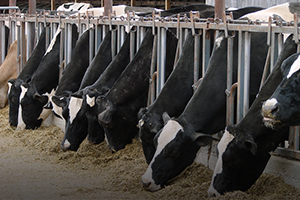Food from Methane
 Some major food companies in the United States and in Europe are looking to fossil fuels to produce animal feed — an idea that’s understandably being viewed as somewhat controversial. Although the feed has already been approved by the European Union (EU) for livestock and farmed fish, approval is still underway in the United States and could potentially be expanded to include dogs, cats and even humans.
Some major food companies in the United States and in Europe are looking to fossil fuels to produce animal feed — an idea that’s understandably being viewed as somewhat controversial. Although the feed has already been approved by the European Union (EU) for livestock and farmed fish, approval is still underway in the United States and could potentially be expanded to include dogs, cats and even humans.
The process being exploited is not new. In fact, it first evolved billions of years ago, even before photosynthesis, as methanotrophs (microbes that feed on methane) began feasting on the methane that seeps through cracks in the sea floor into ponds and marshes. These organisms basically burn methane for energy and combine with other complex organic molecules to produce a high-protein food product that can be dried and turned into pellets. But along the way, one of the by-products is carbon dioxide, which, on a large scale, could actually exacerbate global warming.
Proponents of the technology claim that the reduced need for land to grow livestock feed and lower demand for wild fish to feed farmed fish would counteract the effect of increased CO2 emissions. They also propose that the process will reduce hazardous gas flares, which currently release nearly 140 billion cubic meters (5.3 trillion cubic feet) of natural gas into the atmosphere every year. But opponents argue that using non-renewable fossil fuels in lieu of sunlight is an environmentally unsound approach to long-term food production.
For information: Calysta, 1140 O’Brien Drive, Menlo Park, CA 94025; phone: 650-492-6880; email: info@calysta.com; Web site: http://calysta.com/ Unibio International plc, 2 Royal College Street, London NW1 0NH, United Kingdom; phone: +44-(0)20-7691-4902; email: unibio@unibiogroup.com; Web site: http://www.unibio.dk/